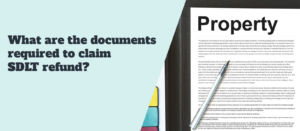
Have you ever wondered if you’ve overpaid Stamp Duty Land Tax (SDLT) when purchasing a property in England or Northern Ireland?
You’re not alone! Many people are unaware that they may be eligible for SDLT refunds, also known as stamp duty land tax refunds.
In this blog post, we will explore the ins and outs of SDLT, its importance in property transactions, and the eligibility criteria for claiming stamp duty land tax refunds.
We will also provide tips on how to avoid overpaying SDLT and the process of claiming your stamp duty land tax refund. So, let’s dive in and uncover the mysteries of SDLT refunds and stamp duty land tax.
- Understand SDLT calculation and the importance of accurate assessment to avoid overpayment.
- Eligibility for refunds can be determined by meeting certain conditions, including second home surcharge refund and exemptions for first-time buyers of shared ownership homes.
- Seek professional guidance and stay informed on legislation changes to ensure compliance with SDLT requirements.
Understanding Stamp Duty Land Tax (SDLT)
Stamp Duty Land Tax (SDLT) is a tax which must be paid when buying property or land in England and Northern Ireland. It is charged by the government on these purchases.
As a buyer, you are responsible for paying SDLT, and the amount due depends on the property price and your status.
When acquiring a property, the SDLT can considerably affect the total cost. Furthermore, SDLT regulations can be complex, and a lack of comprehension can lead to overpayment.
To calculate SDLT, various factors are considered, such as property price bands and buyer status, including first-time buyers and non-UK residents.
Different rates and thresholds of Stamp Duty Land Tax (SDLT) affect property or land which is non-residential or mixed-use.
This should be taken into consideration when making any kind of estate transaction. A clear understanding of SDLT calculation helps prevent overpayment and ensures compliance with tax laws.
How SDLT is calculated
Stamp Duty is calculated based on stamp duty bands, with each band having a specific tax rate. For instance, for properties worth between £250,001 to £925,000, the SDLT rate is 5% above £250,000.
These rates increase further depending on the property’s price. Buyer status also plays a significant role in the calculation. First-time buyers are exempt from stamp duty on the first £425,000 and can claim relief for properties worth up to £625,000.
So, when asking “how much stamp duty” will be owed, it’s essential to consider these factors, as well as “how much tax” will be applied in the form of Stamp Duty, before you pay stamp duty.
An additional 3% stamp duty surcharge applies to second residences, such as buy-to-let properties or holiday homes.
Non-UK residents buying residential properties in England and Northern Ireland are required to pay an extra 2% surcharge since 1 April 2021.
This will be applicable on their total payment amount. Certain exemptions, such as for collective investment vehicles like REITs, exist to the 2% stamp duty surcharge for non-UK residents.
The Importance of Accurate SDLT Assessment
Avoiding overpayment and potential refunds requires accurate SDLT assessment. Overpaying SDLT can lead to a higher initial expenditure for property buyers and investors.
To accurately calculate SDLT (Stamp Duty Land Tax), you can use the HM Revenue and Customs’ (HMRC) Stamp Duty Land Tax calculator, available on the official government website at https://www.gov.uk/stamp-duty-land-tax.
Compliance and prevention of overpayment demand a solid understanding of the complex SDLT rules and regulations.
Frequent causes of overpayment include complexity of regulations, misclassification of property, and errors in calculation. Grasping the intricacies of SDLT is vital to pay the correct amount and avoid financial strain.
Common reasons for overpayment
Complexity of the rules for Stamp Duty Land Tax (SDLT) stems from factors such as:
- The structure of the transaction
- The scope, rates, and reliefs of SDLT
- Special rules for different types of purchasers
- The complexity of the SDLT return document
- Intricate rules for leases
- Specific exemptions and administrative requirements for certain situations
A thorough understanding of the SDLT rules is vital for compliance and preventing overpayment.
Misclassification of a property can lead to overpayment of SDLT if it’s incorrectly categorized. For example, if a property is classified as mixed residential and non-residential use, it could result in a higher rate of stamp duty being applied, causing an overpayment. Ensuring the correct classification is applied can help prevent overpayment of SDLT.
Errors in calculation can also contribute to overpaying SDLT due to a lack of comprehension of the regulations.
A clear understanding of SDLT rules and their application to your property transaction is critical to correctly calculate the tax and prevent overpayment.
Eligibility for SDLT Refunds
Various eligibility criteria exist for claiming SDLT refunds, including second home surcharge, properties with annexes, and shared ownership exemptions for first-time buyers. Another scenario where buyers might be eligible for SDLT refunds is through claiming multiple dwellings relief, particularly in cases involving properties with more than one dwelling, such as mixed-use properties or those with annexes or self-contained structures.

If you sell your previous main residence within three years of purchasing your new home, you may be eligible for a stamp duty refund. To claim a refund, certain conditions must be met, and the refund must be claimed within a specified timeline.
Understanding the eligibility criteria for SDLT refunds can help you determine if you’re entitled to a refund and the steps necessary to claim it. In the following subsections, we’ll explore the different eligibility criteria in more detail.
Second home surcharge refund
The second home surcharge is an additional 3% payment applied on top of the standard stamp duty payment for buyers purchasing a second home.
You can reclaim stamp duty on your second home surcharge if you sell your primary residence within three years of paying the additional 3%. This refund is available to help with the costs of buying and selling a home. The claim for properties sold on or before October 28, 2018 must be made within a year of the stamp duty being filed on the purchase.
Alternatively, it should be made within three months of the sale’s completion date, whichever is later. The request must be received by HMRC within 12 months of the main residence being sold for properties sold on or after October 29, 2018. Alternatively, it can be given within a year of the new residence’s stamp duty filing date, whichever comes later.
Claiming a second home stamp duty refund can help alleviate the financial burden of purchasing a second property. Be sure to review the eligibility criteria and timeline for claiming stamp duty refunds to ensure you receive any entitled refunds.
Properties with annexes
Refund eligibility for additional residential property with annexes, granny flats, or similar buildings is also possible.
Properties with a self-contained annexe on their grounds are now considered a single dwelling, provided that the main building is worth at least two-thirds of the property’s total value.
This change in regulations affects not only SDLT refunds for properties with annexes but also buildings transaction tax.
To claim a refund for properties with annexes, the main building must be worth at least two-thirds of the overall value of the property, and the property must have a self-contained annexe on the grounds.
Understanding these criteria can help you determine if you’re eligible for an SDLT refund on a property with an annexe.
Shared ownership exemptions for first-time buyers
First-time buyers purchasing a property through a shared ownership scheme may also be eligible for SDLT refunds. Shared ownership is a scheme that enables individuals to purchase a portion of a property and pay a mortgage on the share they own, while also paying rent to a housing association on the remaining part.
First-time buyers in shared ownership homes are exempt from paying SDLT on the first £425,000 of a home that costs up to £625,000.
When purchasing a property through a shared ownership scheme, if the buyer increases their share from 25% to 75%, they will not be liable to pay any SDLT on the staircase transaction.
Understanding the shared ownership exemptions available for first-time buyers can help ensure that you claim any potential SDLT refunds.
Claiming Your SDLT Refund
Understanding the process and eligibility criteria for a stamp duty refund claim is crucial, especially if your purchased property was deemed uninhabitable at the time of purchase. This knowledge can significantly aid in comprehensive tax planning and ensuring you meet the requirements for making a stamp duty refund claim.
Filing an SDLT refund claim requires submission of necessary documentation either online or through postal mail. Providing all required information and filing within the specified timeframes helps avoid delays and rejections.
In the following subsections, we’ll detail the required documentation, filing methods, and potential pitfalls to avoid when claiming your SDLT refund.

Required documentation
When claiming an SDLT refund, you’ll need to provide the following proofs:
- Proof of payment, such as a copy of a council tax bill, a copy of a utilities bill, or a copy of a bank statement
- Proof of ownership, including an SDLT3 form for transactions involving multiple properties, an SDLT1 form for the first property, and an SDLT3 form for each additional property
- Proof of the justification for the refund, which may require a Certification of amendment for the Stamp Duty Land Tax return and a document signed by the buyer confirming the agent’s authority to reclaim SDLT on their behalf.
Orderly and complete documentation is key to a smooth and successful SDLT refund claim.
Ensure that you have all the required documents and that they are accurate and up-to-date before submitting your claim.
Filing methods
There are two primary filing methods for claiming an SDLT refund: online or by post. To file online, you can apply through the government website using a form on-screen and your Government Gateway user ID, which simplifies the submission process by allowing you to fill in and submit your claim electronically without the need for a solicitor or accountant.
When filing by postal mail, you’ll need the SDLT16 form, which can be accessed and downloaded from the HMRC website. The postal address for submitting the SDLT refund forms in the UK is BT Stamp Duty Land Tax, HM Revenue and Customs, BX9 1HD.
Selecting a filing method that suits you best facilitates a smooth refund process. Be sure to follow all instructions and guidelines when filing your claim to avoid any delays or rejections.
Potential pitfalls
When claiming an SDLT refund, it’s important to be aware of potential pitfalls, such as high fees charged by ‘no win, no fee’ companies. These companies provide assistance in reclaiming stamp duty, charging a fee only in the event of a successful claim.
However, they typically take around 30% of the total rebate and interest received from a successful SDLT refund claim.
Conducting thorough research and considering professional guidance when claiming an SDLT refund can help you avoid potential pitfalls.
This can help ensure that you receive the full amount you’re entitled to and avoid any unnecessary fees or complications.
Processing Time for SDLT Refunds
The typical processing time for SDLT refunds is up to 15 days after submitting the required information. However, there may be exceptions to this timeframe, depending on the specific circumstances of your claim.
Ensuring a smooth and timely refund process involves providing all necessary documentation and filing your claim within the specified timeframes.
Tips for Avoiding Overpayment of SDLT
Avoiding overpayment of SDLT is essential for property buyers and investors. By seeking professional guidance and staying updated on legislation changes, you can ensure that you’re paying the correct amount of SDLT and avoid any potential refunds.
The subsequent subsections offer tips on seeking professional guidance and maintaining up-to-date knowledge on legislative changes.
Seeking professional guidance
Obtaining professional guidance for SDLT can provide numerous advantages, such as:
- Expertise in tax laws and regulations
- Averting mistakes
- Maximizing savings
- Saving time
- Peace of mind
A professional SDLT advisor can calculate the tax based on the property purchase price and consider the applicable rates and thresholds to accurately determine the total tax amount.
Consulting with a professional in regards to SDLT matters can be advantageous in the following situations:
- Assessing the implications for GPs
- Reviewing one’s SDLT calculation for the potential of a refund
- Managing complex transactions
- Confronting HMRC compliance checks
The average cost of engaging a professional SDLT advisor can range from £250 to £1,200, depending on the complexity of the case and the services provided.
Staying updated on legislation changes
Keeping abreast of legislative changes is crucial in complying with SDLT requirements and avoiding overpayment. Recent changes to the SDLT legislation include:
- The implementation of the Stamp Duty Land Tax (Reduction) Bill on 24 October 2022
- Proposed amendments in the Stamp Duty Land Tax (Reduction) Bill
- The provisional rise in the threshold for residential property before becoming subject to Stamp Duty Land Tax.
Staying updated on the most recent legislative changes ensures awareness of any new directives or regulations that may affect your SDLT liability, helping to prevent potential overpayment. Regularly reviewing government websites and tax-related news sources can help you stay informed of any changes to SDLT legislation.
In conclusion, understanding Stamp Duty Land Tax and its implications on property purchases is crucial for buyers and investors.
By accurately assessing SDLT, staying updated on legislation changes, and seeking professional guidance, you can avoid overpayment and claim any refunds you may be entitled to. With the right knowledge and resources, navigating the complexities of SDLT can become a manageable and rewarding process.
How much is stamp duty land tax ?
For UK residential properties, the stamp duty land tax is a tax paid by the buyer when the purchase price exceeds £250,000.
The rate ranges from 5% to 12%, depending on the value of the property, the purchase date and whether you are a multiple home owner. First-time buyers in England and Northern Ireland won’t pay any tax on properties priced at or below £425,000.
Is land tax the same as stamp duty?
Stamp Duty Land Tax (SDLT) is applicable when buying property or land in England and Northern Ireland, whereas Land and Building Transaction Tax (LBTT) and Land Transactions Tax (LTT) are applicable in Scotland and Wales respectively.
Who pays stamp duty land tax?
The home buyer is liable to pay Stamp Duty Land Tax (SDLT), which is administered by HM Revenue and Customs (HMRC). This is normally paid by the buyer’s solicitor on their behalf as part of the purchase process, with certain reliefs and exemptions available.
From 23 September 2022, no stamp duty will be paid on the first £250,000 of the property’s value in England and Northern Ireland.
Do you have to pay stamp duty land tax?
Yes, you have to pay stamp duty land tax when purchasing land. Land tax is charged similarly to stamp duty for property purchases.
What is the SDLT rate in the UK?
SDLT is a tax applied to UK residential property purchases exceeding £250,000 and can range from 5-12% of the purchase price depending on the value, date of purchase and ownership status.
We understand that incorrect stamp duty payments can lead to financial burdens for homebuyers. If you believe you may have overpaid on your stamp duty, we encourage you to take action and explore the possibility of a refund.
Seeking professional advice from a qualified tax specialist or consulting with relevant authorities could provide valuable guidance on your specific situation. By taking the necessary steps, you may have the opportunity to reclaim any overpayment you are owed and alleviate some of the financial strain.


